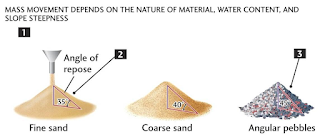PRESERVATIVES: A Basics
·
Definition:
A substance which is added to a preparation to prevent bacterial growth and
subsequent spoilage of the preparation.
·
Preservative
describes those antimicrobial agents used to protect pharmaceutical
preparations.
·
Microbes
are growth in non-sterile formulation lead to chemical changes in formulation
and spoilage of product hence preservatives are required.
·
Examples:
ethanol, alcohol, chlorhexidine, benzoic acid, methyl parabens, ethyl parabens.
·
Antimicrobial preservatives:
o
Emulsions
contain water, which will support microbial growth.
o
Microbes
produce unpleasant odours, colour changes and gases and may affect the
emulsifying agent, possibly causing breakdown of the emulsion.
o
Examples
include arachis oil which supports Aspergillus species and
liquid paraffin which supports Penicillium species.
·
Preservation of suspension:
o
All
pharmaceutical preparations that contain water are therefore susceptible to
microbial growth.
o
Water
is the most common source of microbial contamination.
o
Natural
polymer such as acacia & tragacanth may be sources of microbes and spores.
·
Preservation of solutions:
o
Most
water-containing pharmaceutical solutions will support microbial growth unless
this is prevented.
o
Contamination
may come from raw materials or be introduced during dispensing.
o
Preservatives
may be added to the formulation to reduce or prevent microbial growth.
Chloroform is the most widely used in oral preparations.
Mechanism of action:
·
Preservatives
interfere with the growth, multiplication and metabolism of micro-organism by
following mechanism:
o
Modify
membrane permeability of microbes
o
Denaturation
of enzymes and other cellular proteins.
o
Oxidize
cellular constituents.
o
Hydrolysis
Ideal Properties of
preservatives:
·
Exert
a wide range of antimicrobial activity at low concentration levels.
·
Maintain
activity throughout product manufacture, shelf life and usage.
·
Not
affect the quality or performance of product, pack or delivery system.
·
Not
adversely affect patient safety or tolerance of the product.
·
It
should be effective against a wide range of microorganisms such as bacteria,
mold and fungi etc. at room temperature.
·
It
should be chemically compatible with other ingredients of the formulation.
·
It
should be nontoxic and nonirritant.
·
It
should be soluble in aqueous phase when used in emulsions.
·
If
the system is biphasic, the partition-coefficient should be in favor of the
aqueous phase.
·
It
should be odourless, tasteless, and should not impart colour in the
formulation.
·
It
should be stable and effective over a wide range of pH.
·
It
should be thermostable.
Classification of
preservatives:
·
Acidic: Phenol, Chlorocresol, O-phenyl
phenol, Parahydroxy benzoic acid, Benzoic acid, Boric acid, Sorbic acid
o
Benzoic acid: Used
in 0.1% w/v concentration, It is nontoxic unless taken in large
quantity, Loss effectiveness above 5.0 pH.
o
Parahydroxy benzoates: Derivatives of benzoic acid, used for syrup and other
formulation, Concentration range from 0.05 % to 0.005 %
o Sorbic Acid: Description-Free-flowing, while, crystalline powder,
melt about 1330C, Solubility: 1 gm in 1000 mL water, 10 mL alcohol,
15 mL chloroform, 30 mL ether, or 19 mL propylene glycol, Use: A mold and yeast
inhibitor & as a fungistatic agent for foods.
·
Neutral:
Chlorobutanol, Benzyl alcohol, Beta-
phenyl ethyl alcohol
·
Mercurial:
Thiomersal, pheny mercuric acetate and nitrate, Nitromersol
Quaternary Ammonium compounds: Benzalkonium chloride



Comments
Post a Comment